Higher classification Meleagrididae | Scientific name Meleagris | |
 | ||
Lower classifications Domesticated turkey, ocellated turkey Similar Turkey meat, Helmeted guineafowl, Domestic duck, Poultry, Pörkölt | ||
The turkey is a large bird in the genus Meleagris, which is native to the Americas. One species, Meleagris gallopavo (commonly known as the domestic turkey or wild turkey), is native to the forests of North America, from Mexico, throughout the midwest and eastern United States, and into southeastern Canada. The other living species is Meleagris ocellata or the ocellated turkey, native to the forests of the YucatáN Peninsula. Males of both turkey species have a distinctive fleshy wattle or protuberance that hangs from the top of the beak (called a snood). They are among the largest birds in their ranges. As in many Galliformes, the male is larger and much more colorful than the female.
Contents

Taxonomy
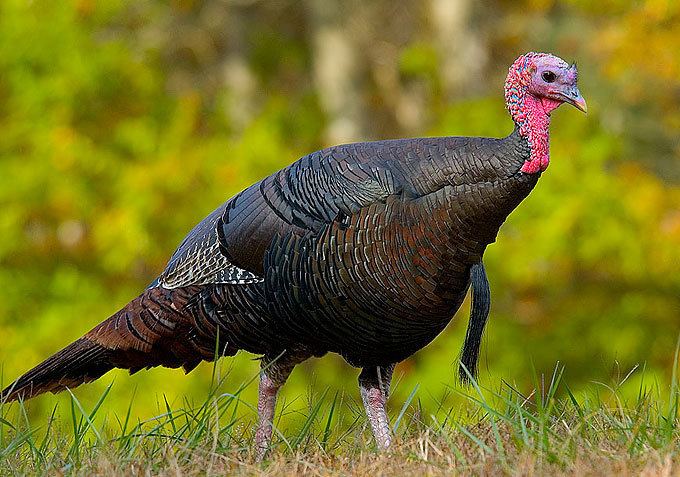
Turkeys are classed in the family of Phasianidae (pheasants, partridges, francolins, junglefowl, grouse and relatives) in the taxonomic order of Galliformes. The genus Meleagris is the only extant genus in the subfamily Meleagridinae, formerly known as the family Meleagrididae, but now subsumed within the family Phasianidae.
History and naming
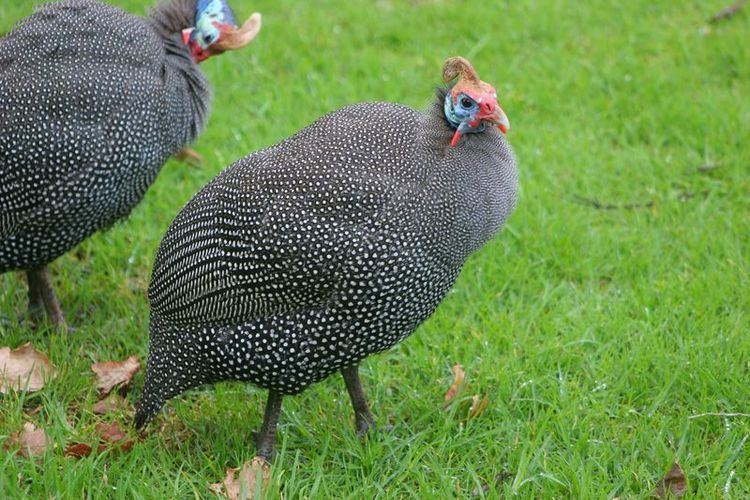
There are two theories for the derivation of the name "turkey" for this bird, according to Columbia University professor of Romance languages Mario Pei. One theory is that when Europeans first encountered turkeys in America, they incorrectly identified the birds as a type of guineafowl, which were already being imported into Europe by Turkey merchants via Constantinople and were therefore nicknamed Turkey coqs. The name of the North American bird thus became "turkey fowl" or "Indian turkeys", which was then shortened to just "turkeys".
The other theory arises from turkeys coming to England from the Americas via merchant ships from the Middle East where they were domesticated successfully. Again the importers lent the name to the bird: because these merchants were called "Turkey merchants" as much of the area was part of the Ottoman Empire. Hence the name "Turkey birds" or, soon thereafter, "turkeys".
In 1550, the English navigator William Strickland, who had introduced the turkey into England, was granted a coat of arms including a "turkey-cock in his pride proper". William Shakespeare used the term in Twelfth Night, believed to be written in 1601 or 1602. The lack of context around his usage suggests that the term had widespread reach.
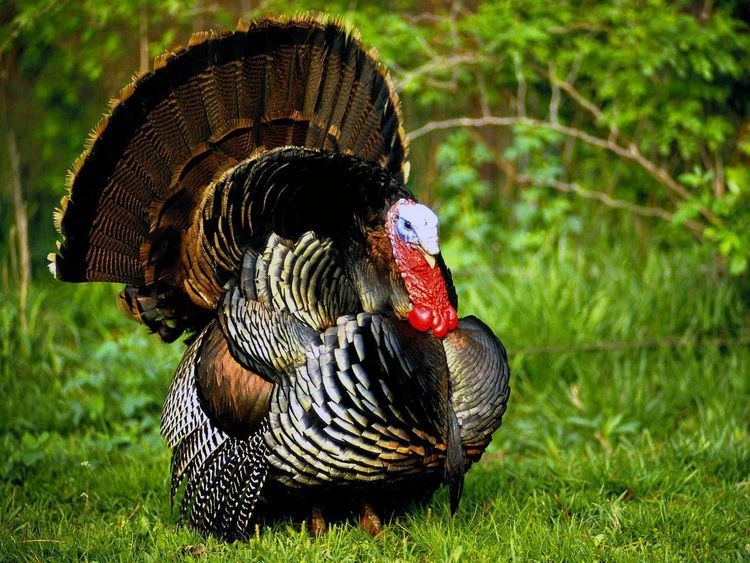
In many countries, the names for turkeys have different derivations. Ironically, many of these names incorporate an assumed Indian origin, such as diiq Hindi ("Indian rooster") in Arabian countries, dinde ("from India") in French, Indjushka ("bird of India") in Russia, indyk in Poland, and Hindi ("India") in Turkey. These are thought to arise from the thought that Christopher Columbus had originally believed that he had reached India rather than the Americas on his voyage. In Portuguese a turkey is a Peru; the name is thought to derive from the eponymous country Perú.
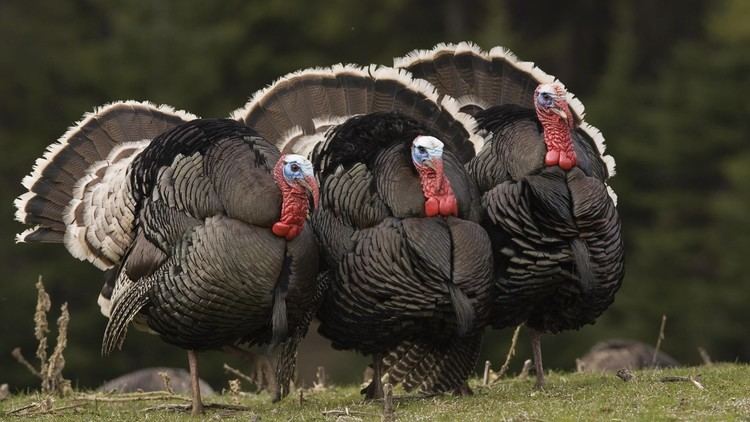
Several other birds that are sometimes called turkeys are not particularly closely related: the brushturkeys are megapodes, and the bird sometimes known as the "Australian turkey" is the Australian bustard (Ardeotis australis). The anhinga (Anhinga anhinga) is sometimes called a water turkey, from the shape of its tail when the feathers are fully spread for drying.
Fossil record
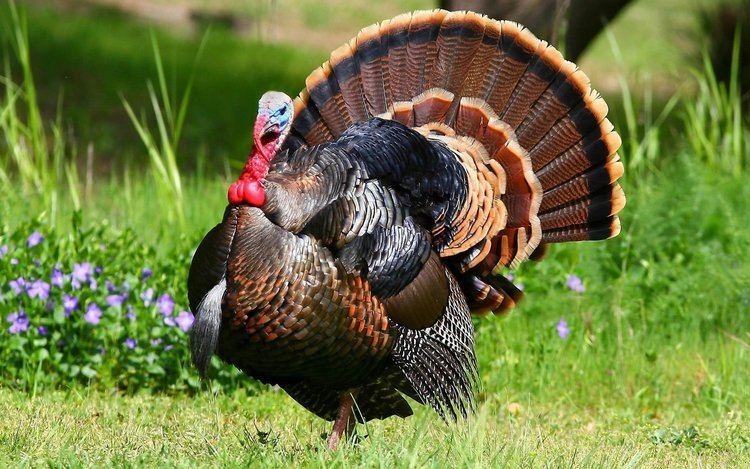
A number of turkeys have been described from fossils. The Meleagridinae are known from the Early Miocene (C. 23 mya) onwards, with the extinct genera Rhegminornis (Early Miocene of Bell, U.S.) and Proagriocharis (Kimball Late Miocene/Early Pliocene of Lime Creek, U.S.). The former is probably a basal turkey, the other a more contemporary bird not very similar to known turkeys; both were much smaller birds. A turkey fossil not assignable to genus but similar to Meleagris is known from the Late Miocene of Westmoreland County, Virginia. In the modern genus Meleagris, a considerable number of species have been described, as turkey fossils are robust and fairly often found, and turkeys show great variation among individuals. Many of these supposed fossilized species are now considered junior synonyms. One, the well-documented California turkey Meleagris californica, became extinct recently enough to have been hunted by early human settlers. It is believed its demise was due to the combined pressures caused by hunting and by climate change at the end of the last glacial period.
The Oligocene fossil Meleagris antiquus was first described by Othniel Charles Marsh in 1871. It has since been reassigned to the genus Paracrax, first interpreted as a cracid, then soon after as a bathornithid Cariamiformes.
Fossils
Turkeys have been considered by many authorities to be their own family—the Meleagrididae—but a recent genomic analyses of a retrotransposon marker groups turkeys in the family Phasianidae. In 2010, a team of scientists published a draft sequence of the domestic turkey (Meleagris gallopavo) genome.
Use by humans
The species Meleagris gallopavo is used by humans for their meat. However, they were first domesticated by the indigenous people of Mexico from at least 800 BC onwards. These domesticates were then either introduced into what is now the Southwest US or independently domesticated a second time by the indigenous people of that region by 200 BC, at first for their feathers, which were used in ceremonies and to make robes and blankets. Turkeys were first used for meat by Native Americans by about AD 1100. Compared to wild turkeys, domestic turkeys are selectively bred to grow larger in size for their meat. Humans normally eat turkeys on special occasions such as at Thanksgiving or Christmas.
The Norfolk turkeys
In her written memoirs Lady Dorothy Nevill recalls that her great-grandfather Horatio Walpole, 1st Earl of Orford imported a quantity of the American turkeys which were kept in the woods around Wolterton and in all probability were the embryo flock for the popular Norfolk turkey breeds of today.
